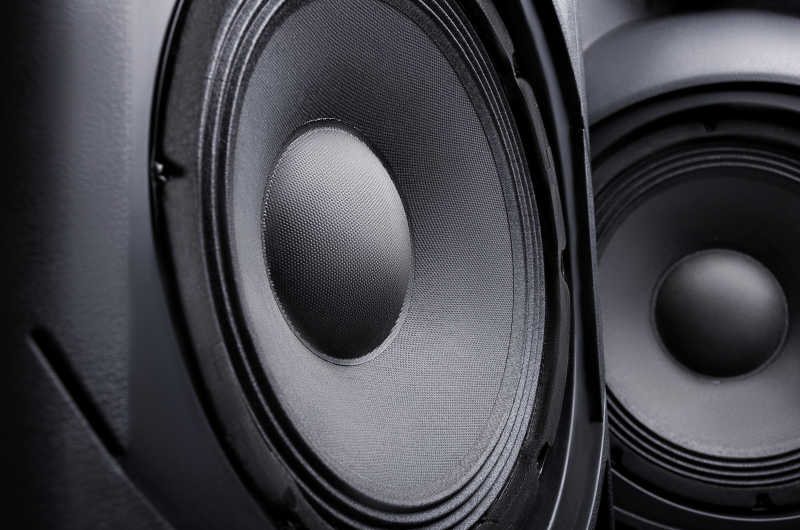
This statement is correct in most cases, because the electroacoustic conversion efficiency is very low, and more than 90% is converted into heat. The larger the voice coil, the better the heat dissipation capacity. Of course, the design of the voice coil must also be considered, such as The subwoofer’s voice coil can handle more power. Common 6.5-inch mid-woofer speakers often only have a rated power of about 40W, and ordinary tweeters can only withstand power between 15W and 25W. Although many brands will mark the rated power of their products as very high, they cannot withstand high power.
If you play white noise or sine wave signals at a high volume, many speakers will not be able to withstand it for one minute, especially the treble. It is generally scarce for a treble to withstand high power! For example, Morey’s Supreme Speaker has an internal magnetic large voice coil design with a voice coil diameter of 75mm, so its power capacity is 140w. Although it is already huge, its tweeter only has a 1.1-inch voice coil, which is It is 28mm, the rated power is 220W, and the peak power is 1000W.
Why can the treble withstand such a high power?
Because the tweeter has a magnetic fluid inside, and the magnetic fluid can quickly dissipate the heat of the voice coil to the metal outside, so it can withstand greater power.
In summary, you cannot use the rated power to judge whether the speaker is good. It is better to judge it based on the sensitivity.
What is the relationship between speaker sound and size?
If you want to have a large sound pressure, you must use more energy to push more air molecules per unit time. In terms of two sizes, the area of the diaphragm of a 15mm speaker is approximately (7.5* 7.5*3.14=176mm square) and 20mm is (10*10*3.14=314mm square). Although the 20mm diameter speaker is only 5mm/25% larger in size, the surface area of the diaphragm is 78% larger. When we give these two speakers the same power, the sound they hear will be very different. This is because the 20mm speaker can push more air molecules at the same time, and its larger size usually has a low-frequency response. It will be better, and the sound perceived by human ears will be better.
Of course, we can also give the small speaker more power to emit higher sound pressure, but it is limited by:
1. The bearing capacity of the diaphragm
2. Speaker heat dissipation capacity
3. Changes in frequency response characteristics after increasing power (the diaphragm needs to be thickened, the voice coil becomes heavier…)
Therefore, we have to improve the material and speaker structure, and try to make the small-sized speaker louder. However, if the size allows, changing to a larger-sized speaker can immediately improve the problem of insufficient sound.
Will the speakers have broken sound?
The causes of abnormal sound can be analyzed from the user’s perspective. The following common problems are:
1.The speaker is a passive component. The sound it emits is determined by the driver circuit of the speaker. Giving the speaker the correct power and waveform are the most basic requirements. Excessive power will cause the diaphragm to have excessive amplitude and slight distortion. If the problem is serious, the diaphragm will hit the mechanism or magnet, causing broken sound;
2.The basic waveform for driving a speaker is a sine wave. If it is given other waveforms such as square waves, the efficiency of the speaker will become low and it will easily generate heat. At the same time, it may also produce broken sound;
3.The speaker design of the product structure will also affect the sound quality of the speaker. Appropriate speakers can improve the response curve of the speaker. It is best for the speaker sound hole to have an opening ratio of more than 1/8, and a film should be left between the casing and the diaphragm. There is a space for the chip to vibrate, so as not to hit the casing when making sound and produce abnormal noise.
4.Size: For micro speakers, the size has a decisive impact on the volume. If the diameter differs by 5mm, the diaphragm area may be half (15-20mm), so the volume will be very different. In addition, the thicker the La, because there is a larger space to vibrate, it is usually equipped with a larger magnet, so there is more power to push the air and produce a louder sound.
5.Power: mainly refers to the power that the speaker can withstand, and has no absolute relationship with the volume. The higher the power, the thicker the diaphragm and the thicker the voice coil must be, so that it can withstand the high power. In this way The efficiency will be reduced (the sound will become smaller), so in accordance with the design of the mechanism, try to use a larger size and select a power that can match the output of the amplification circuit to produce the maximum sound.
6.Impedance: The higher the impedance, the more power it saves, but the volume will be smaller and the power it can withstand will also be smaller, because it must use thinner wires (the power will be smaller), or wind more turns (heavy mass, poor efficiency).
